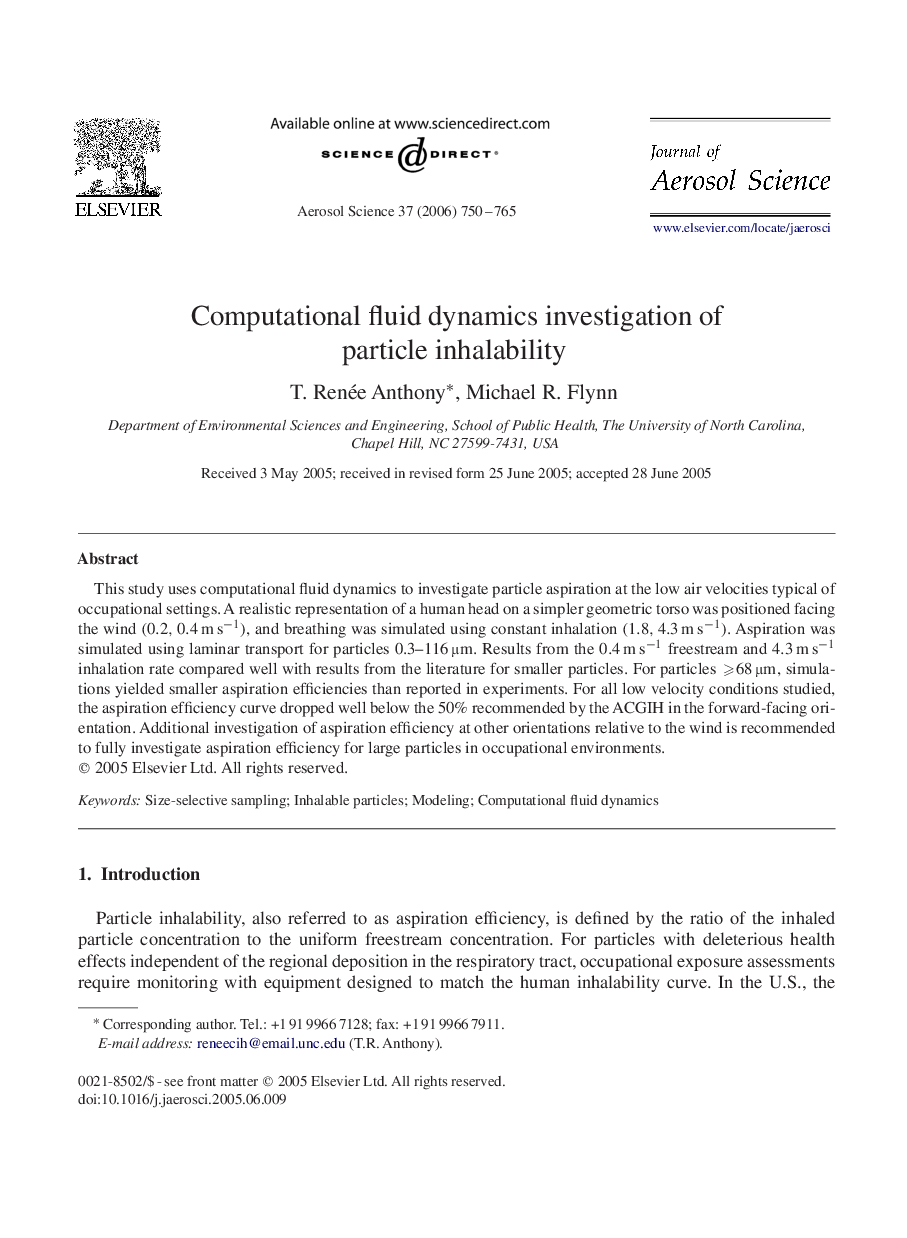| Article ID | Journal | Published Year | Pages | File Type |
|---|---|---|---|---|
| 4453332 | Journal of Aerosol Science | 2006 | 16 Pages |
This study uses computational fluid dynamics to investigate particle aspiration at the low air velocities typical of occupational settings. A realistic representation of a human head on a simpler geometric torso was positioned facing the wind (0.2,0.4ms-1), and breathing was simulated using constant inhalation (1.8,4.3ms-1). Aspiration was simulated using laminar transport for particles 0.3–116μm. Results from the 0.4ms-1 freestream and 4.3ms-1 inhalation rate compared well with results from the literature for smaller particles. For particles ⩾68μm, simulations yielded smaller aspiration efficiencies than reported in experiments. For all low velocity conditions studied, the aspiration efficiency curve dropped well below the 50% recommended by the ACGIH in the forward-facing orientation. Additional investigation of aspiration efficiency at other orientations relative to the wind is recommended to fully investigate aspiration efficiency for large particles in occupational environments.
